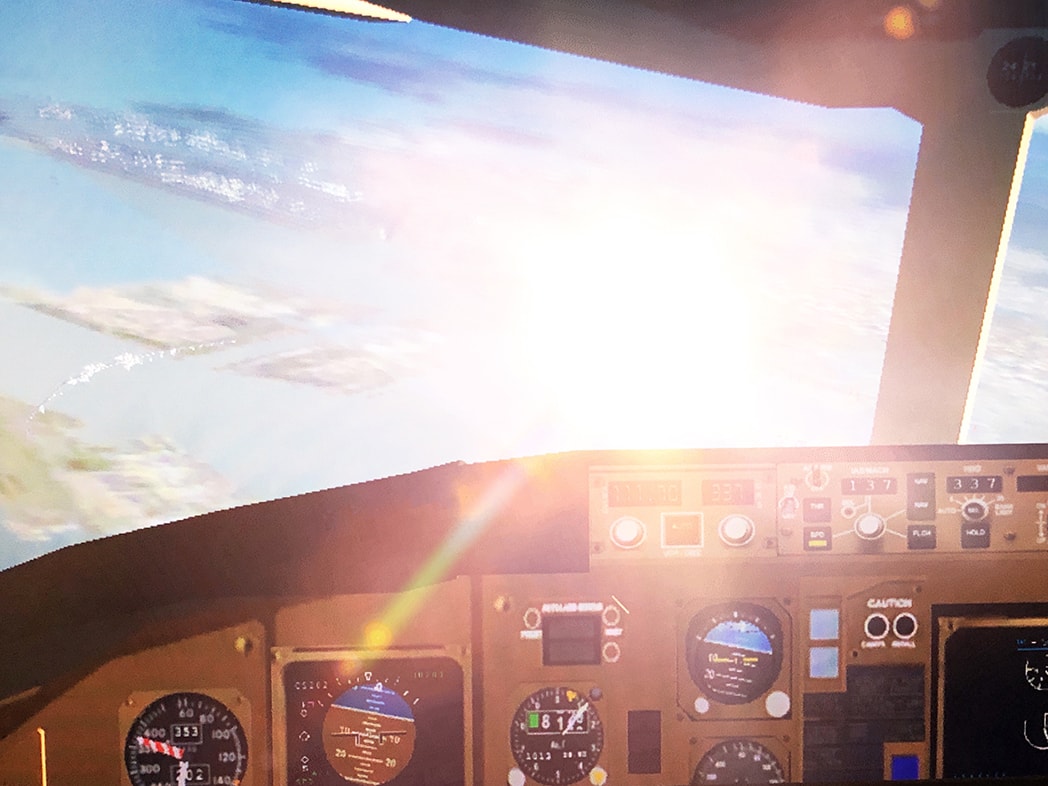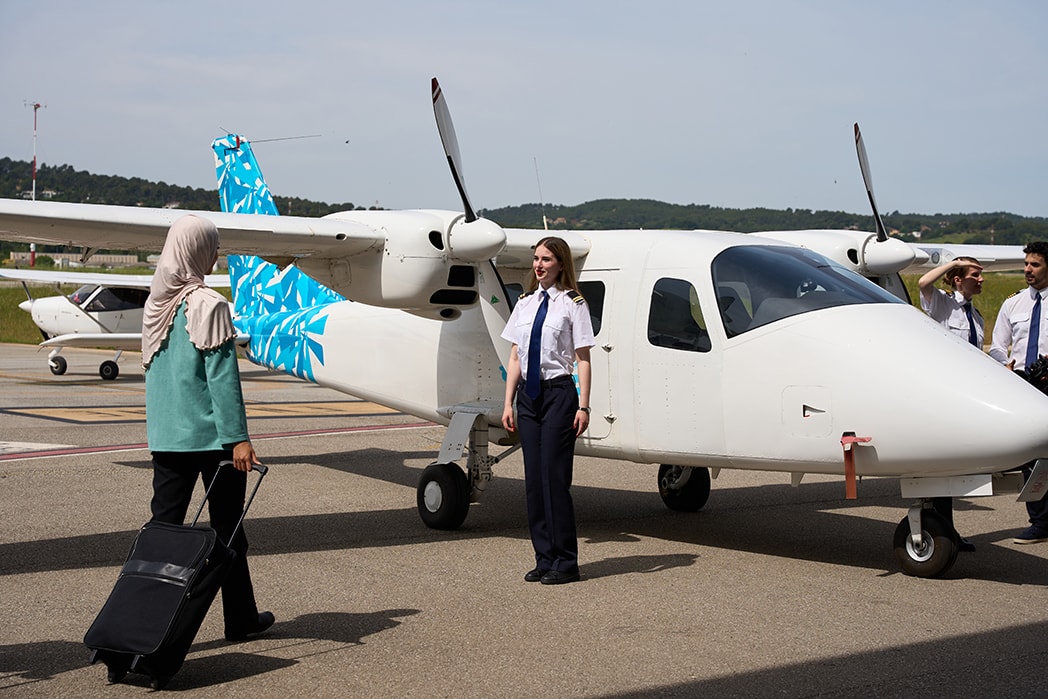Part 61 Flight Training: Your Complete Pilot Guide
Aug 18, 2025
Want to fit flight training into your busy schedule? Part 61 flight training might be the answer. This guide explains what Part 61 training is, the pros and cons and how it differs from Part 141. Read on to see if Part 61 is right for you.
Key Takeaways
-
Part 61 flight training allows flexible scheduling and customized lesson plans so you can fit training into your life.
-
The main difference between Part 61 and Part 141 is flight hour requirements and structure, Part 61 is more personalized.
-
Pros of Part 61 are personalized instruction, less pressure and you get to choose your instructors. Cons are potentially more expensive and inconsistent quality.
Understanding Part 61 Flight Training
Part 61 flight training is all about flexibility and less structure. Unlike Part 141’s curriculum, Part 61 is customized. Students can schedule lessons at their convenience, create their own learning plans and choose from multiple ground school options.
This flexibility is a big plus for many would be pilots especially those with other commitments. Students can progress at their own pace and accommodate their flexible schedule with small aircraft.
Plus, lesson plans can be tailored to individual learning styles and progress, so students get the attention and instruction they need to succeed all while still complying with federal aviation regulations part 61.
Flexibility in Scheduling
One of the best things about Part 61 flight training is the scheduling flexibility. Unlike rigid programs, Part 61 allows you to schedule sessions around your commitments, whether that’s a full time job or other responsibilities.
Made for busy individuals determined to pursue a future in aviation.
You can do weekend lessons, evening classes or whatever time suits you and your lifestyle and progress at your own pace without interfering with your daily life.
The ability to balance flight training with other responsibilities without the pressure of a fixed schedule is a big plus.
Flexibility in scheduling means no long breaks in training, helps in knowledge and skill retention. Balancing training with other responsibilities helps in consistent progress and reduces training time in a structured training program.
Customized Lesson Plans
Customisation is a big part of Part 61 flight training. Unlike more structured programs, instructors can tailor lesson plans to the individual student and their progress, and adjust the pace and focus areas accordingly.
If a student is strong in some areas but needs more work in others, lesson plans can be adapted. So instruction is aligned with strengths and areas for improvement, not a one size fits all approach.
Flexible lesson planning allows instructors to use various teaching methods and tools to suit the student’s learning style, whether hands on flying, simulation or theoretical instruction, to maximize learning.
Ground School Options
Ground school is important to provide the theoretical knowledge for flight principles, navigation, meteorology and more.
Part 61 offers ground school in person and online so students can choose the format that suits them best.
Whether you prefer the interactive classroom or the convenience of online courses, Part 61 has you covered, comprehensive ground training along with flight instruction.
Key Differences Between Part 61 and Part 141
Knowing the difference between Part 61 and Part 141 is key when choosing a flight school. Each has its own way and pros and cons.
Part 141 flight schools are regulated by the federal government and must follow an FAA approved syllabus from the federal aviation administration.
This means a very structured training environment with mandatory classroom instruction and standardized curriculum.
Part 61 is more flexible, you can train to your needs and schedule. Part 141 flight school programs are a more comprehensive approach to aviation training.
Your training goal is professional aviation career or recreational flying will determine your choice between Part 61 and Part 141 as it aligns with your career goals.
Flight Time Requirements
One of the big differences between Part 61 and Part 141 is flight time requirements. Part 61 is 250 hours for a commercial pilot license and Part 141 is 120 hours. This can affect the length and cost of training.
While the lower minimum flight hours under Part 141 may seem like a bonus, consider your own learning pace and needs. If you’re a fast learner or career focused student this can help reduce overall training time and expense.
Part 61 allows for gradual accumulation of flight time, good for those who need fewer hours to build confidence and skills and ultimately lower flight time requirements.
Ultimately it’s up to you to decide between Part 61 and Part 141. If you want faster training Part 141 may be for you. If you want a self paced approach Part 61 may be better.
Structured vs. Flexible Training Programs
Training structure is another big difference. Part 141 schools follow strict FAA regulations and audits so the training environment is standardized.
This is good for students who thrive in a structured environment with clear guidelines and schedules.
Part 61 on the other hand offers more flexibility in training programs and lesson plans. This can lead to inconsistent instruction and skills coverage as training is heavily dependent on the instructor and school resources.
Part 141 schools may have better facilities and resources but Part 61’s flexibility allows for a more personalized and adaptable training experience which may be better for some students.
Cost Implications
Cost is a big factor when choosing between Part 61 and Part 141 flight training. Part 61 can be more expensive due to more flight time. Pay as you go can also mean more overall cost if training takes longer.
But negotiating aircraft rental and instructor rates under Part 61 can be cost savers. Flexibility is key to managing expenses but discipline is key to not extending training and additional cost.
Advantages of Part 61 Flight Training

Despite the challenges Part 61 flight training has many advantages that make it attractive to many pilots. The flexibility and customization can lead to a more personal and effective learning experience.
Personalized Instruction
One of the biggest benefits of Part 61 flight training is the personalized instruction. Instructors tailor the teaching and lesson plans to your needs and progress so you get a supportive and effective training environment.
Strong mentorship in a Part 61 program can really make a big difference in your learning experience, guidance, motivation and valuable insight to help you succeed.
Lower Pressure Environment
Part 61 training is less regulated so a more relaxed and comfortable learning environment, less student stress and more comfort and confidence according to federal regulations.
Students in Part 61 programs must self motivate to progress. While flexibility means different progress levels it also means a supportive learning environment that prioritizes well being and confidence.
Flexibility in Instructor Choice
Plus you get to choose your flight instructors. You can pick and switch instructors to find the one that fits your learning style and needs and overall training experience.
This also means you can align your training to your schedule and preferences and learn better.
Challenges of Part 61 Flight Training
While it has many benefits, Part 61 flight training also has challenges. Knowing these challenges will help you make an informed decision about your flight training.
Potentially Higher Costs
One of the challenges of Part 61 flight training is more overall cost. Pay as you go can cost more if training takes longer and more flight hours, instructor fees and additional resources.
Complete your training as soon as possible and avoid extended periods that will cost more.
Self-Discipline Required
Part 61 flight training requires a lot of self discipline and motivation. Training at your own pace means you’re accountable for your own progress and that can be tough when other commitments get in the way.
While personalized instruction and flexible scheduling helps keep students engaged and motivated, it ultimately comes down to you to stay organized and focused.
Inconsistent Quality
Instruction quality and facilities can vary greatly between Part 61 schools so you may end up with different educational outcomes and skill gaps. Make sure to verify instructor qualifications and experience to get the same quality training.
Choose a school with experienced instructors and that will help minimize these challenges.
Choosing the Right Part 61 Flight School

Choosing the right Part 61 school is crucial to your training. This section will give you practical tips and advice to help you decide.
Evaluating School's Reputation
Reputation is important. Use the AOPA Flight School Finder to find award winning schools based on customer reviews. Online reviews and testimonials will give you an idea of what other students have experienced.
A school’s reputation is often a reflection of their ability to keep consistent schedules and provide a supportive learning environment.
Research the school’s history to make sure you choose a school that provides quality education and meets your training needs to train.
Certified Instructors
Instructors are crucial to your training. Make sure they:
-
Are certified
-
Have lots of flying time
-
Have their credentials and availability asked about
-
Are full-time or part-time
Certified instructors are the key to good and safe instruction as a flight instructor. A strong aviation background including experience in different flying conditions helps them to teach and support your learning journey.
Facilities and Aircraft Availability
The number and condition of aircraft at a school can make a big difference to your training. Visit local airports and tour the facilities and ask about maintenance programs.
A well maintained fleet and variety of aircraft provides a comprehensive training environment.
Also check aircraft availability and scheduling flexibility. A school with a big fleet and a well organized booking system means you can complete your training without unnecessary delays.
Career Opportunities with Part 61 Training

Part 61 training opens up many career opportunities in aviation. Whether you want to fly recreationally or professionally, Part 61 is the foundation to get you there.
Private Pilot Certificate
Getting a private pilot certificate under Part 61 means recreational flying and personal aviation. Ground school, flight training, pilot training and a practical test.
As a private pilot you can fly personally, travel and fly for fun. This is the first step towards more advanced ratings and career opportunities in aviation.
To get started, it's important to understand the private pilot requirements part 61 so you know what qualifications and training are needed.
Many students start by getting a private pilot license which is the foundation for all future pilot certifications and ratings.
Commercial Pilot License
Getting a commercial pilot license through Part 61 requires a certain number of flight hours and passing exams.
This license opens up many professional opportunities such as charter flying, aerial photography and flight instructing.
A commercial pilot license is a big deal for those who want to be a professional pilot. It gives you the credentials to work in many areas of the aviation industry and build a career, including getting a commercial pilot certificate.
Advanced Ratings and Certificates
Part 61 allows you to get multiple ratings such as instrument rating and multi-engine rating and be qualified for many flying jobs. These advanced ratings improve your skills and open up more career opportunities.
You can get various advanced ratings including instrument and multi-engine ratings under Part 61.
These get added to your pilot certificate and makes you a more versatile and competitive pilot especially if you plan to pursue an airline transport pilot certificate in the future.
Summary
Part 61 flight training is flexible and personalized. It’s flexible in scheduling, customized lesson plans and multiple ground school options.
It’s a great choice for many aspiring pilots. But you need to weigh the advantages against the disadvantages like higher cost and self discipline,.
Part 61 vs Part 141 flight training shows the big differences in structure, flight time requirements and cost.
Part 61 is more flexible, Part 141 is more structured and regulated. Your choice depends on your goals and circumstances.
In the end Part 61 flight training can lead to many career opportunities in aviation from recreational flying to professional jobs.
By choosing the right flight school, quality instruction and discipline you can make the most of your training and achieve your aviation dreams.
Frequently Asked Questions
What is Part 61 flight training?
Part 61 flight training is flexible and personalized, you can schedule lessons at your convenience and tailor lesson plans to your needs. Perfect for those who want a more flexible path to getting your pilot’s license.
How does Part 61 compare to Part 141 flight training?
Part 61 has more flexibility and personalized instruction, Part 141 has a strict FAA approved syllabus with mandatory classroom components.
Choose the training approach that fits you.
What are the flight time requirements for a commercial pilot license under Part 61?
To get a commercial pilot license under Part 61 you need to have a minimum of 250 hours of flight time. That’s a requirement.
What are the potential challenges of Part 61 flight training?
Part 61 flight training can be tough with increased overall cost due to pay as you go, strong self discipline and motivation and variability in instruction and facilities.
Be prepared for that.
What career opportunities are available with Part 61 training?
Part 61 training can lead to careers as a private pilot, commercial pilot and to pursue advanced ratings such as instrument and multi engine ratings. Those ratings can open up many aviation careers.
